Medieval Fashion and Status Display Clothing: A close look at the reference periods of fashion, which is in a cycle of continuous improvement, change and turning back. Our second stop; Middle Ages and medieval fashion.
Fashion refers to currently popular clothing styles. It always develops, changes and returns. Every style and trend in fashion is recalled from an absolute time or era. That is why it is very important and valuable to have an idea of the history of this evolution.
As you get an idea of a person, you also learn his style. While reading the history of humanity, it is inevitable to take a look at the history of fashion.
In this article series, we will take a closer look at the periods used by fashion as a reference. Enjoy reading..
Medieval Fashion and Status Clothing
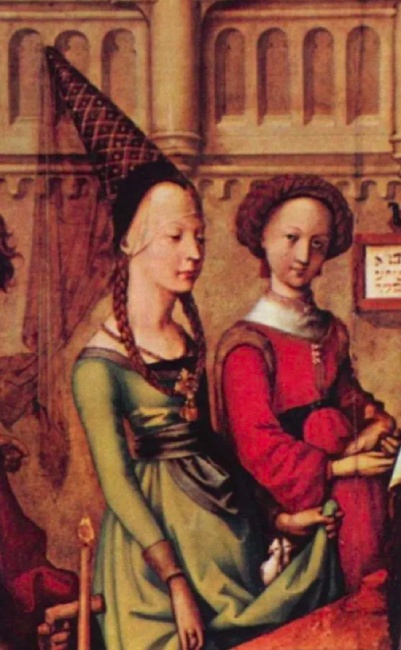
In the High Middle Ages and the Late Middle Ages, European clothing began to evolve according to what we think of as fashion today. The cuts, silhouettes, and decorations changed at a much faster momentum than in the Early Middle Ages – sometimes known as the Dark Ages. Although we have witnessed these changes from year to year, at that time, these periods were from generation to generation.
The Crusades and the expeditions of Marco Polo introduced new cultural interactions, fabrics and technological developments to medieval Europe and the clothing of these lands.
Hand spinning has given way to spinning wheels and vertical looms controlled by foot, and fabric production has thus become a very simple and practical form.
With the development of trade, attractive clothing became widespread and accessible among the developing middle class. Read more, discover more with additional information about medieval fashion.
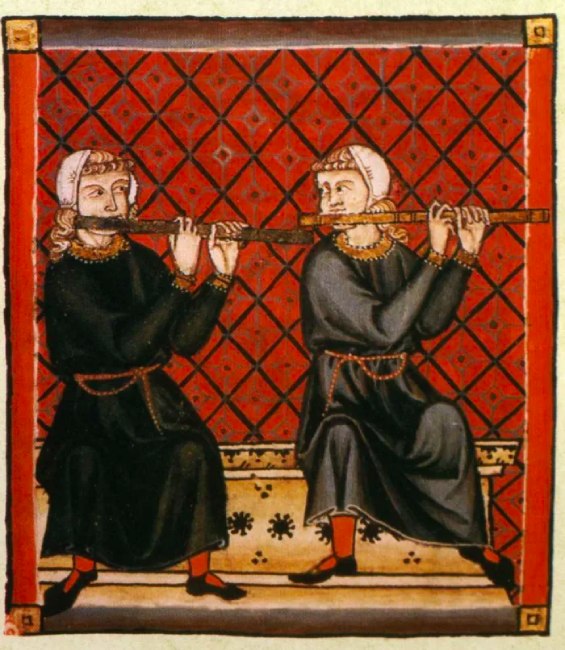
Dress as a Status
Our knowledge of the High and Late Medieval dressing developed through the artworks of the period. People’s styles moved to stained glass, sculptures, paintings, and oil paintings.
Despite the differentiation between class strata and social status, and despite the church’s sermons dictating what type of clothing women should wear, the designers found a way to embroider the clothes and give them interesting touches.
“It is not enough to display your virtue in every buttonhole, you should send your feet to hell for special torment.“
Bertold of Regensburg, 1220
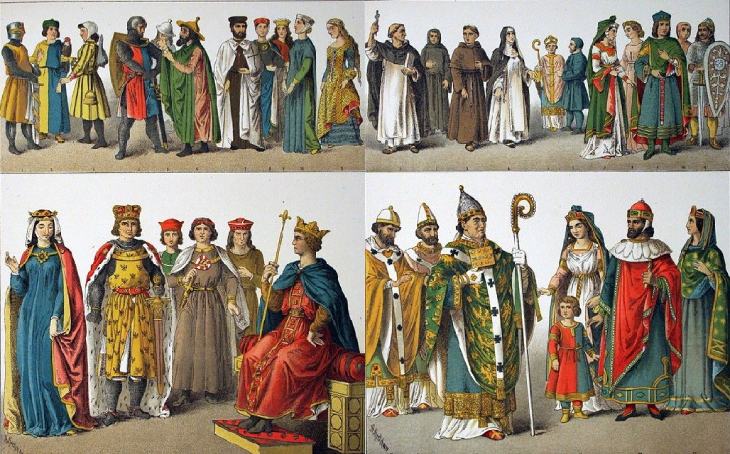
Women’s Clothing in the High Middle Ages
The purpose of the Crusades was to take the holy lands from Muslim control. Men who participated in these expeditions for religious reasons were also after adventures and opportunities. On their way back, they brought new fabrics such as velvet and new clothing styles with them. Civilians adopted this new and foreign style, even if military elements were infused with them.
The form and fit of the clothes have changed. While tunics were draped and undefined in the past, they now fit better on the bodies of both women and men and create a warmer silhouette. Dresses followed the body contours from shoulder to bottom, skirts were sewn to these bodies as a separate piece.
Arms widened like a bell. The sleeves and skirts of the tunics worn inside were extended, creating exaggerated silhouettes that touch the ground from the inside of the top dress.
The tunic, petticoat worn inside was a long piece made of linen. The piece worn on it was called a pelisson. Pelisson was worn with a more draped blouse and tied tightly with laces while welcoming guests.
Jeweled corsets were worn by the upper class. Continue reading to discover more about medieval fashion.
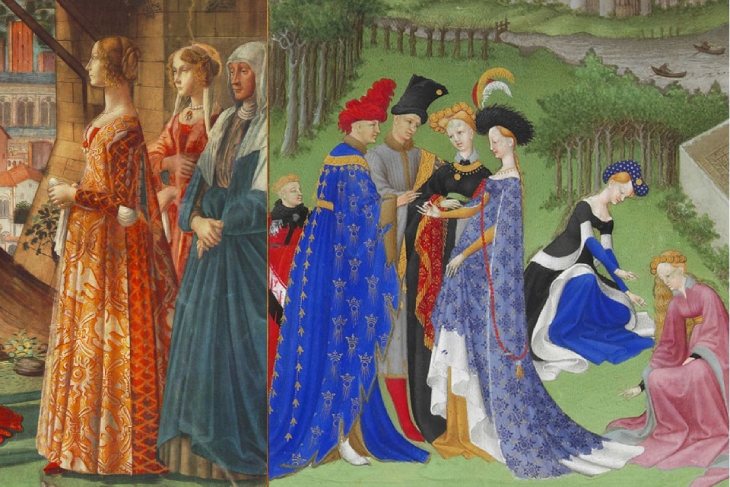
Women carried small pouches that they dangled from their belts. She wore gloves and braided her hair with flowers. The veil turned into a garment and over time evolved into a hair accessory.
Although the church still insisted that women wear the veil for their modesty, over time the veils were made from transparent fabrics such as silk. It was decorated with decorative finishes or became an accessory with metallic threads running through it.
There was a big shot in button use in the High and Late Middle Ages. Buttons previously used only for decoration have become functional.
In the early Middle Ages, trousers were wrapped with leather or fabric bands below the knee. Although men still wear tunics, there has been a change in the way they wear them. Tunics now had side slits to ease leg movements. Get more information about medieval fashion below.
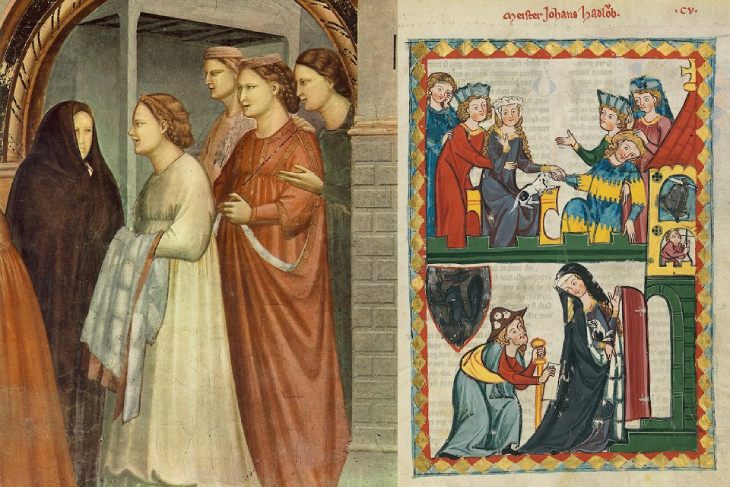
In the 1200’s, there was an increase in the understanding that we can call fashion. While clothes were fully functional in the past, unconventional designs gained popularity. You can discover about medieval fashion below.
With the 13th century, the nose of the shoes became sharp. Although the molds are soft, the ends are filled with moss and supported for strength. The length of the toe has reached such an exaggerated dimension that the authorities have begun to dictate how long the toe of a shoe can be.
Hoodies started to be designed with more fabric and longer than necessary. Keep reading to find out more about medieval fashion.
Hats, Veils and Hair Drapes
One of the styles carried from the Middle East with the Crusades was the scarf. Created with a piece of fabric thrown over the head and wrapped around the face and neck, the style became one of the flamboyant features of the late Middle Ages women. Women of the upper class backed their shawls with rolled fabrics to make things more interesting. Continue reading to get more information about medieval fashion.
Hair accessories, which attracted much attention and became a symbol of luxury, were among the most defining pieces for the High and Late Middle Ages. After a while, shawls with fabric pads started to be supported with wire frames and stylized with horn-like models.
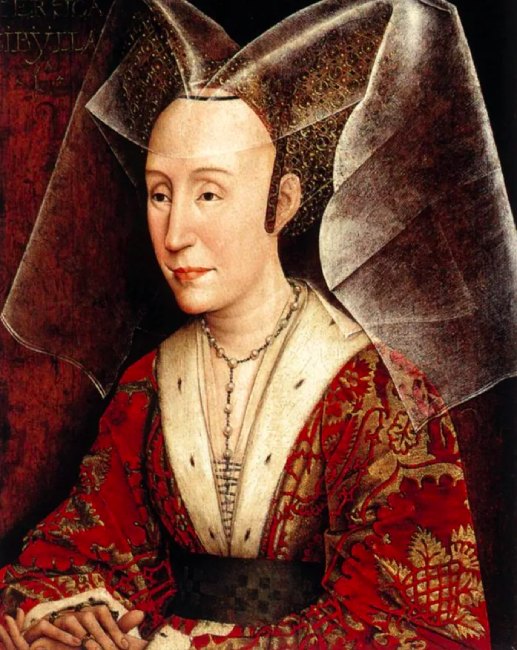
Another of the accessories that defined the era were conical hats, hennin, worn obliquely at the back of the head.
Among those who wear a lot of hair accessories by the aristocratic cut, it has become common for the front hair roots to be scraped off to create the illusion that the forehead appears wide. Eyebrows were fully or partially shaved.
Men, on the other hand, wore hats called tallish, which looked more like a flower pot. Get more information about medieval fashion.
The Birth of Fashion
The High Middle Ages saw a population explosion that made cities that were emptied in the Dark Ages replenish. However, between 1315 and 1317, the population fell again due to the Great Famine, which manifested as cold weather and too much rainfall. Mass starvation problems arose due to lack of nutrients, crops, seeds and stocks, and it took the 1325s for Europe to recover again. The plague epidemic between 1338-1375 caused the population to fall again. Read more about medieval fashion below.
Recovery was slow, but these difficult times paved the way for new changes in the economy, society and clothing to sprout. The loins rose and fell. The arms became smaller and larger. Patterns became clear with both weaving and printing method. Continue reading to get more information about medieval fashion.
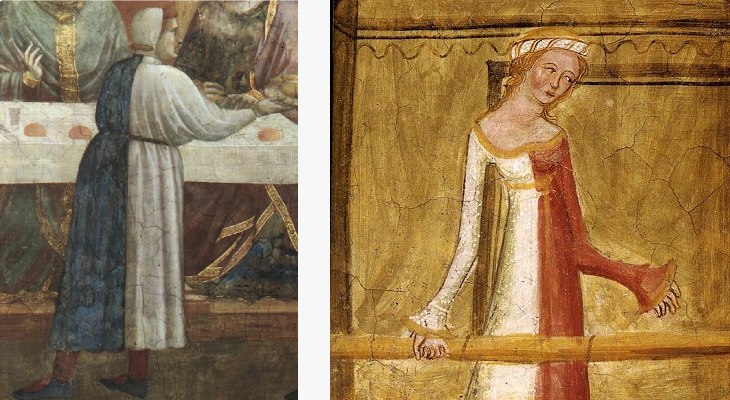
One of the styles that determined the fashion of the late Middle Ages was Gothic; Thinness and length were emphasized for both men and women. Get more information about medieval fashion.
The two colors were combined in an unusual way; A new style was adopted with two different fabrics that divide the body vertically from the center.
Thanks to technology and trade advantages, cities developed again and nations grew. This era, which ended with the fall of Rome and the rising artistic and cultural awakening in Western Europe, hosted many details that could be a reference for fashion. Continue reading to discover more about medieval fashion.
Reflections of the Middle Ages in Today’s Fashion
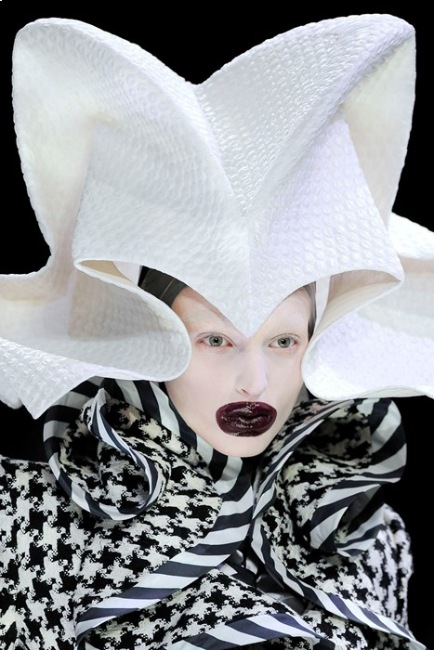
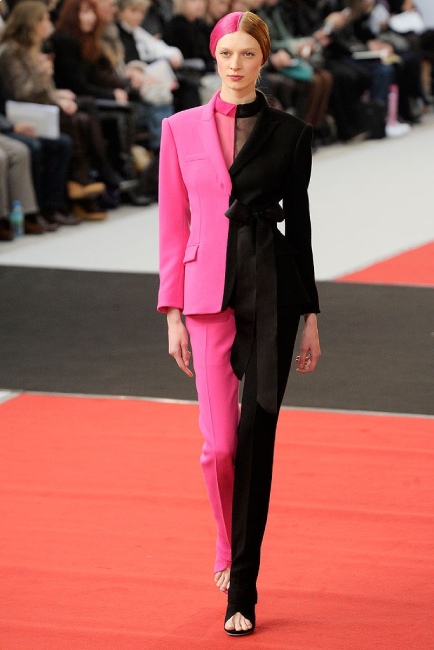
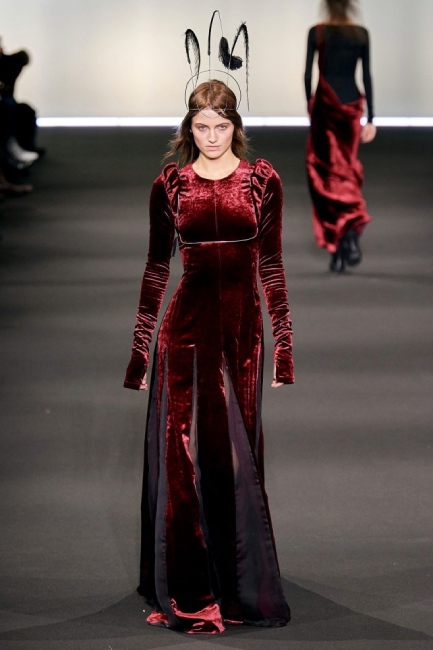
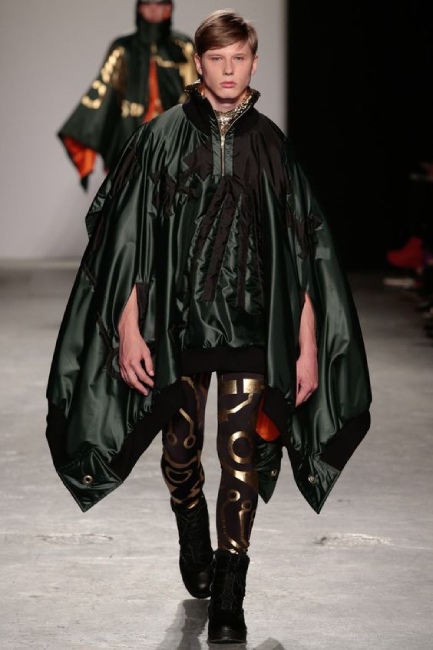
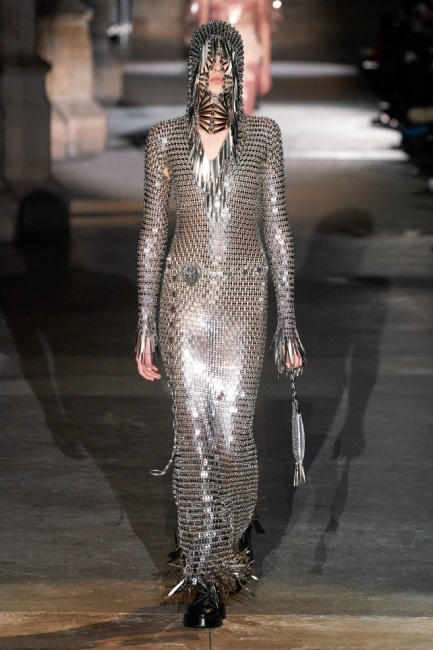
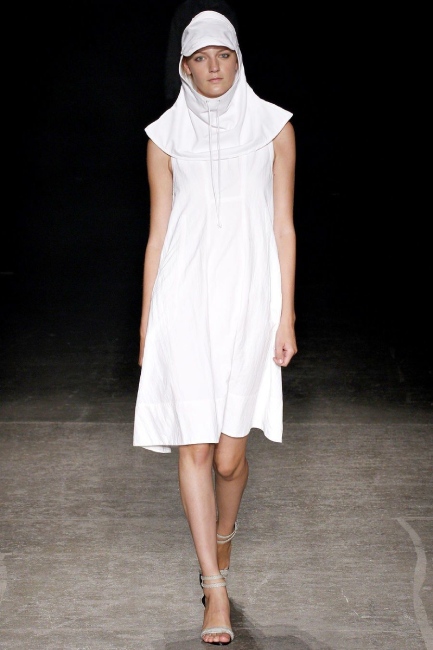
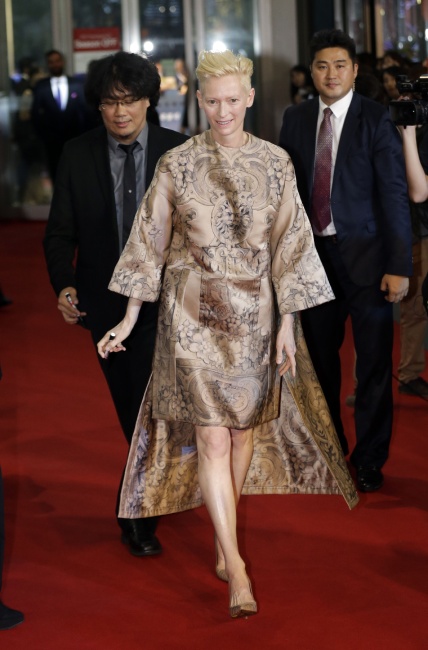

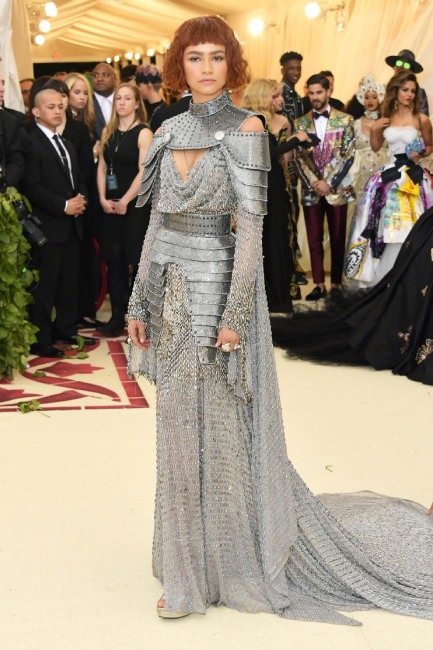
Other “Evolution of Fashion” articles
1990s Fashion w/Low Flying Attitudes
1980s Fashion w/Bigger Better
1970s Fashion, The Age of Polyester
1960s Fashion Influenced by Youth and Street
1950s Fashion with Stylish Options
1940s Fashion – From Coveralls to New Look
The Golden Age of Splendor 1930s Fashion
1920s Fashion w/Flapper and Jazz
Introduction to the 20th Century Fashion
19th Century Fashion and Changing Silhouettes
18th Century Rococo Fashion
Renaissance Fashion and Rebirth
Authentic Clothing in the Ancient World
Related stores
Let’s share!

Leave a Reply